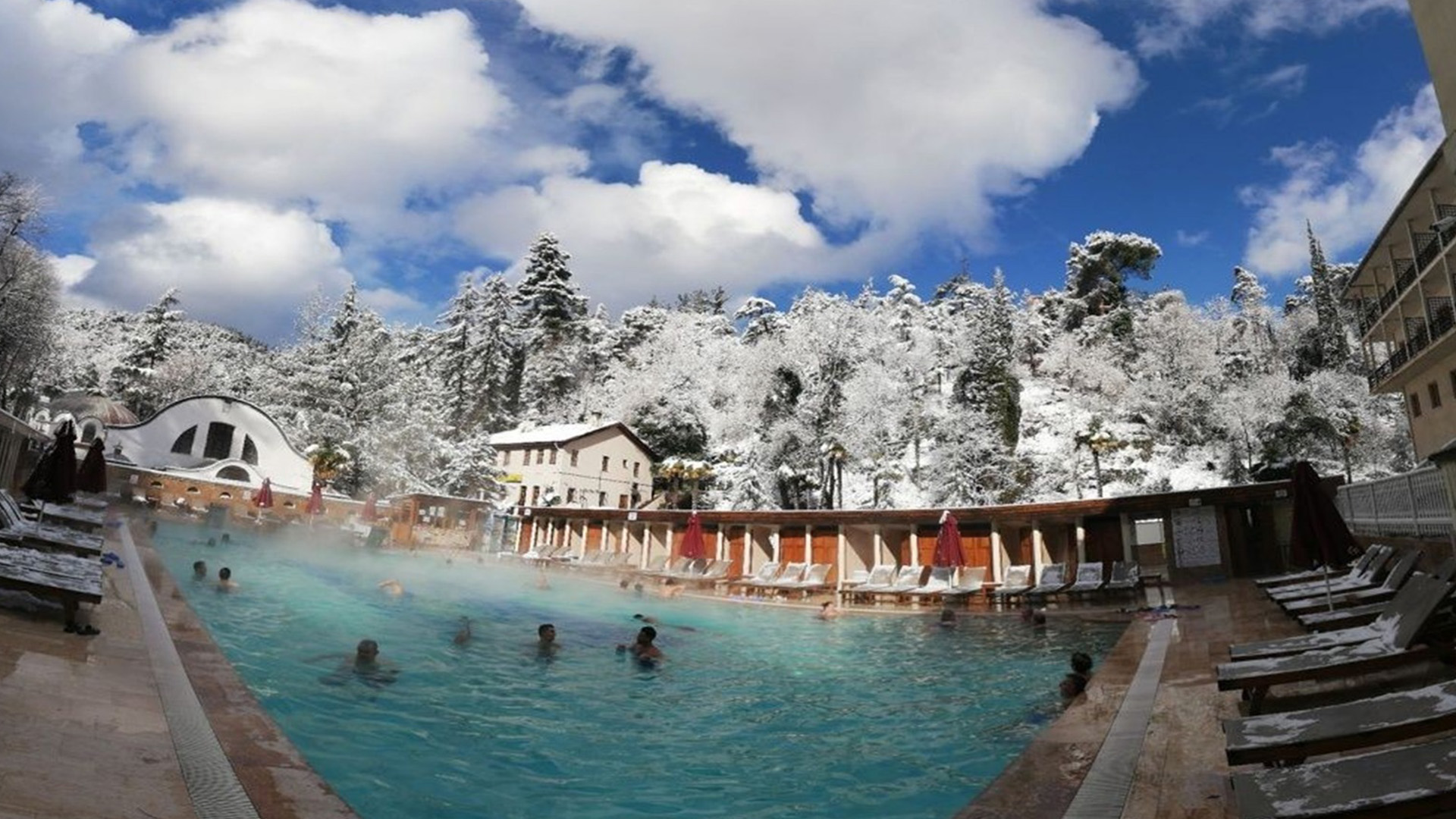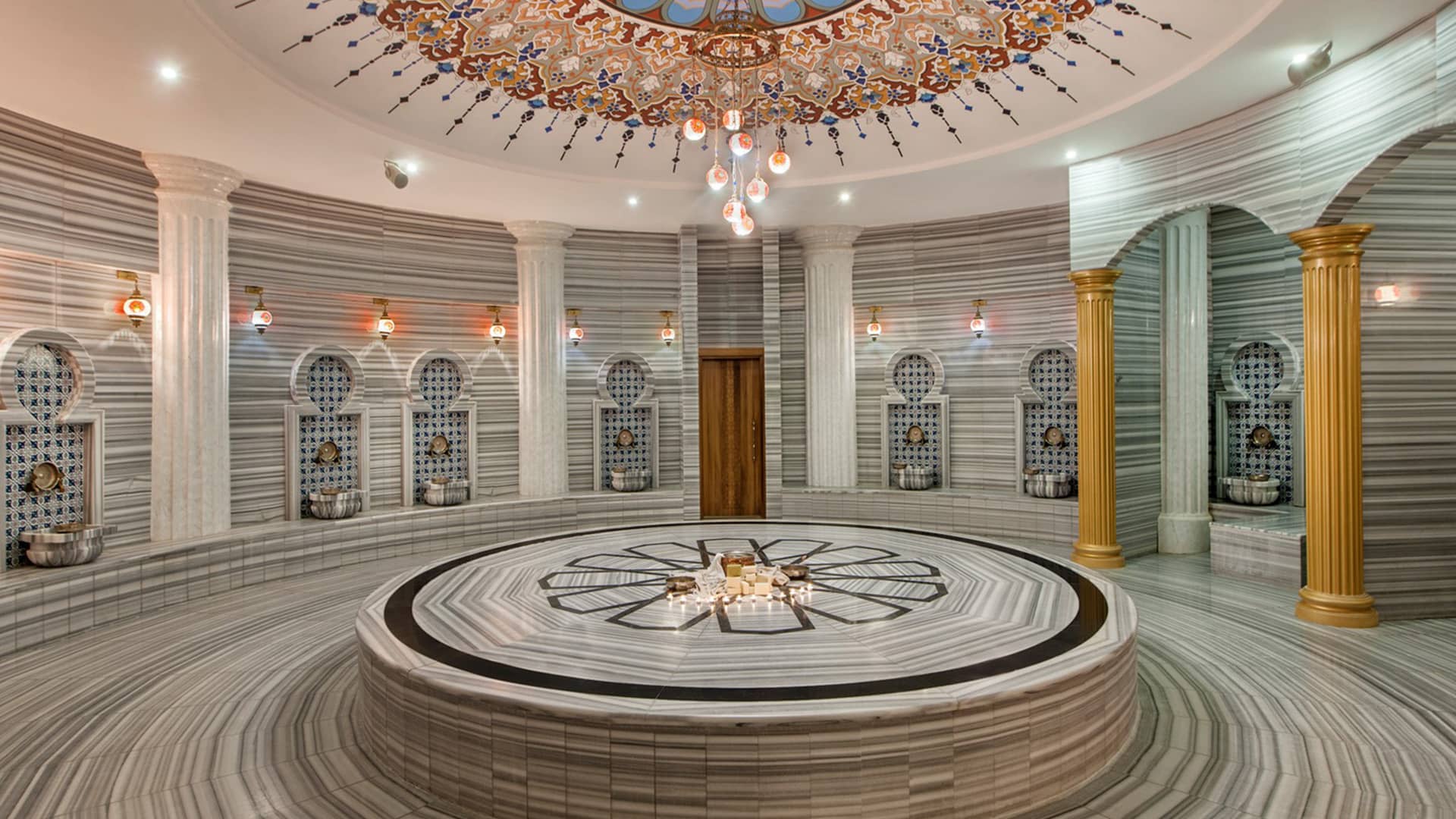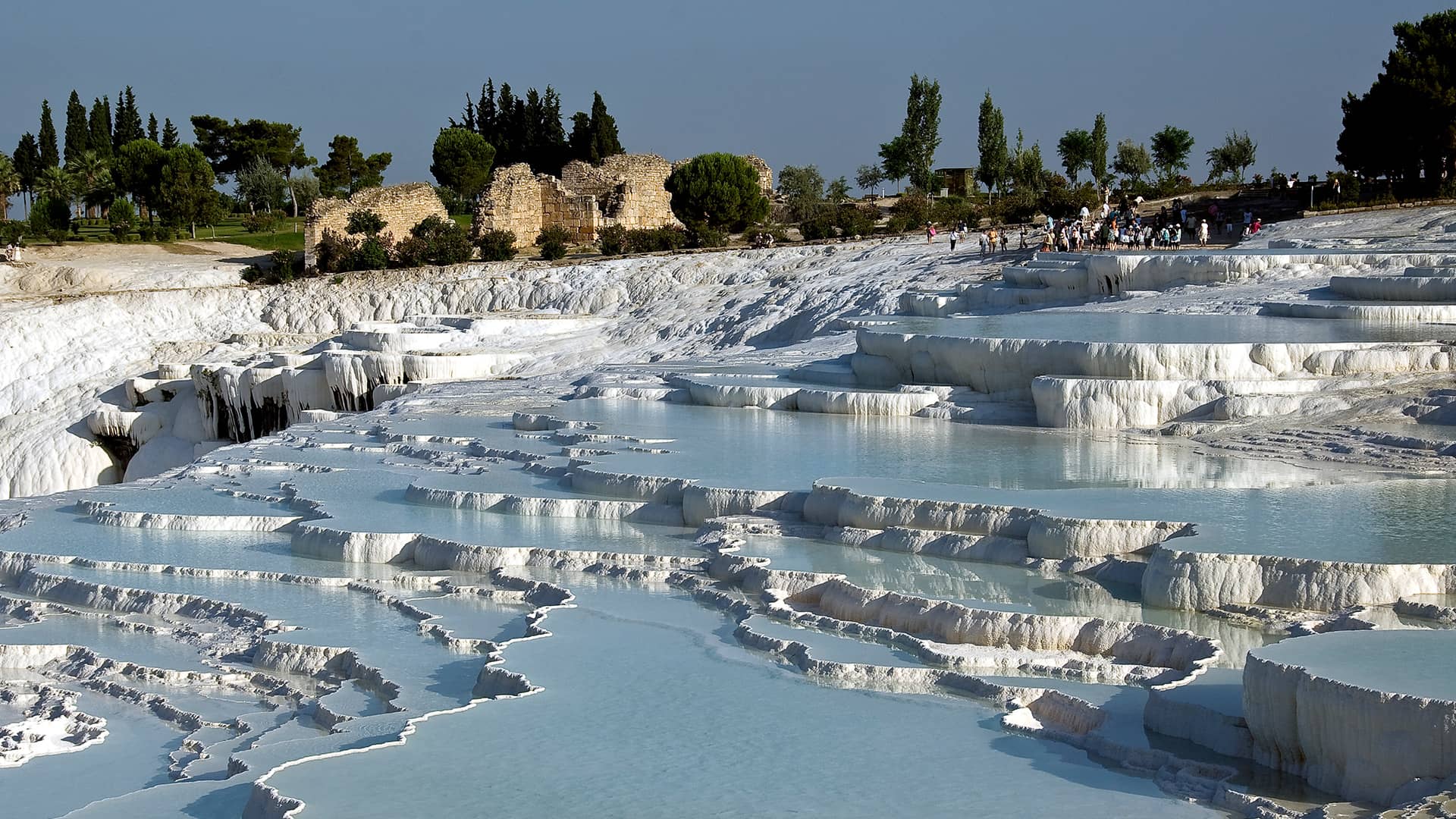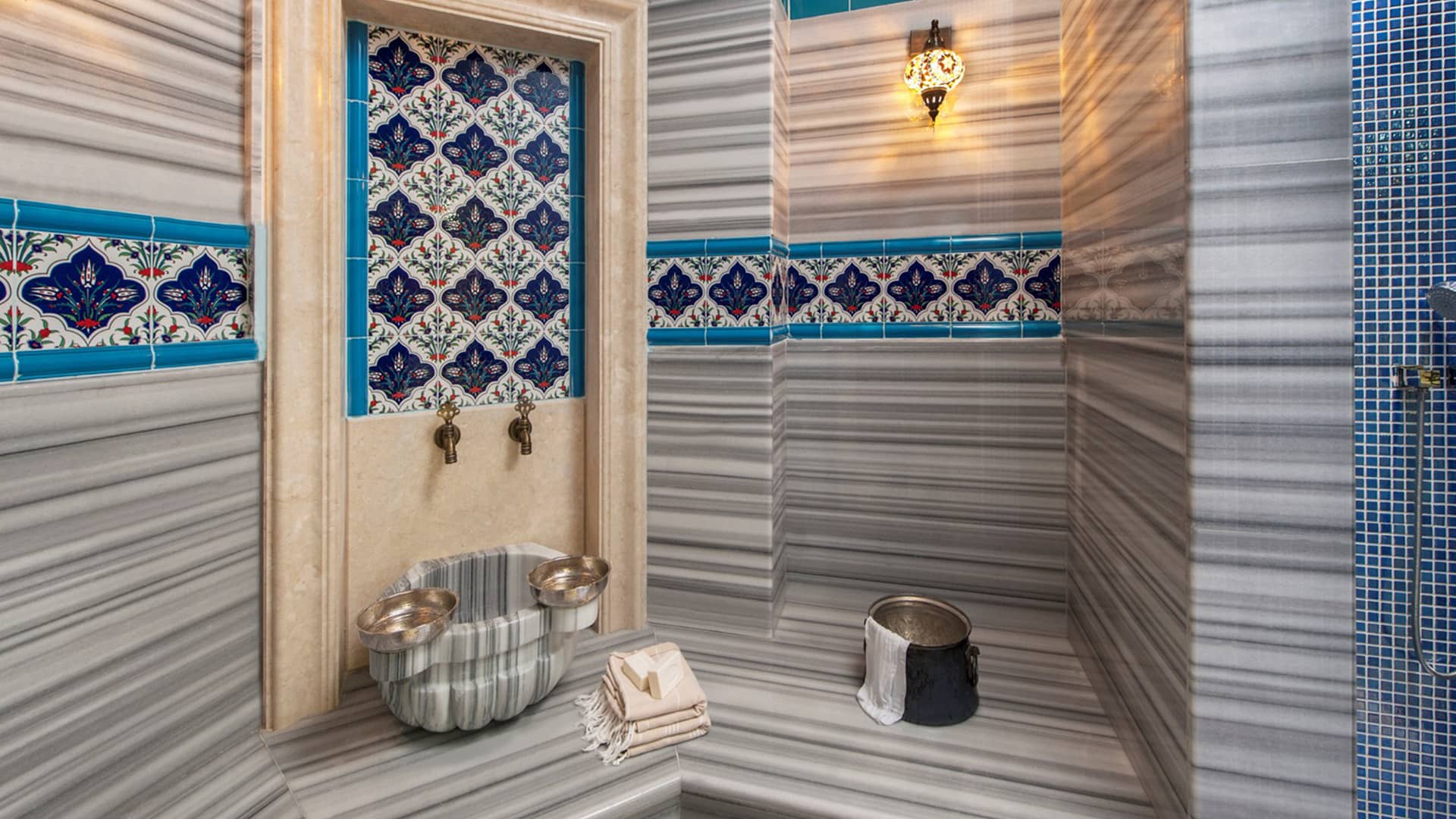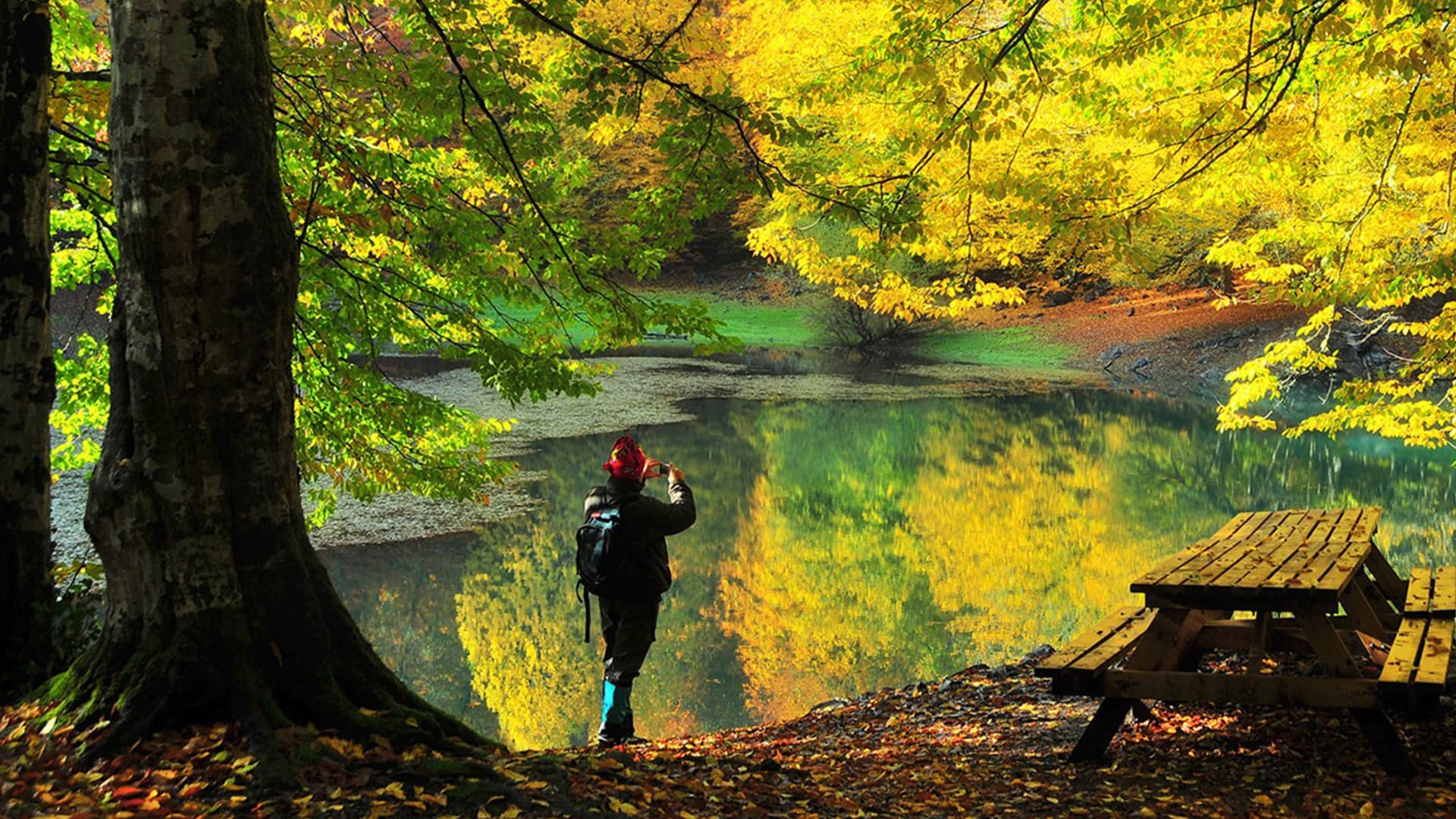

experiences
Healing Waters of Anatolia
A Wellness Journey Through Ancient Springs
Türkiye is a country with a rich history of thermal experiences dating back to ancient times. The country is situated on a geothermal belt and has over 1,000 thermal springs with varying degrees of mineral content and therapeutic properties.
Türkiye is the ideal location for mental and physical renewal thanks to its excellent climate, beautiful natural surroundings, and nutritious cuisine. So, if you are looking for the ultimate experience to re-invigorate yourself, journeying through the healing waters of Anatolia will be illuminating for your mind, body, and soul.
Yalova Thermal Healing by the Marmara Sea
Yalova was Honored by Gazi Mustafa Kemal ATATÜRK with the words; "This will be the water city of the future”. In Yalova, Eski Kaplıca also known as ‘Armutlu Hamamı’ is a large, multi-domed edifice, with enormous ceilings, elaborate marble fountains, and a cosy ambience. The public bath has existed since as early as 525 CE, and many years later Sultan Murad I built the current bathhouse on this site in 1385. It is a part of Yalova’s rich cultural history which is included as a UNESCO World Heritage site.
Armutlu is fed continuously by Çekirge’s Horhor Spring with scorching 90-degree water. The therapeutic water pours out of marble fittings into marble-lined wading pools after chilling to a not so cool but tepid 45 degrees. It is well-known for its high mineral content and is commonly thought to aid in the treatment of a number of maladies ranging from heart disease to digestive difficulties.
After a good scrub with a kese (a traditional exfoliating cloth) and a couple of dips in the hot pool, it's easy to drift off as you listen to the water trickling from the marble fountain and gazing up at the majestic domed ceiling. You will realize that you may have just entered one of the oldest Hamams in Türkiye, but you most definitely will leave feeling anew.
Bursa: A Blend of Ottoman History and Natural Healing
Bursa, which was the first capital of the Ottoman Empire, has often been the source of good health for civilisations over the centuries. The city played a significant role in the rise and expansion of the Ottoman Empire, and many important historical figures, including sultans, poets, and scholars, have lived and worked in Bursa over the centuries.
In addition to its rich history, Bursa is also known for its natural beauty, including the nearby Uludağ mountain, which is a popular skiing destination in the winter months. The city's many parks, gardens, and hot springs also attract tourists from around the world.
The ancient Oylat Thermal Springs are the most popular health and thermal tourist destination in the city. The Oylat waters at the foothills of Uludağ are potable and are located in the İnegöl area. They are rich in Sulphur, Iron, Calcium, Bicarbonate, Hydrogen ions.
Another thermal spring in the region, which has many therapeutic properties is the Çekirge Thermal Spring, also referred to as ‘Silver Waters’ owing to its crystal-clear palette. It is rich in magnesium and known for curing many rheumatic diseases.
Balıkesir: Hot Springs, Holistic Health, and Historic Beauty
Located in northwest of Türkiye, Balıkesir had always been a historical focal point for health tourism. Come and enjoy hot springs, cultural richness, mythology, healthy local cuisine, sea, mountain, and forest.
The Ida Mountains, also known as Kazdağları, are located in the northwestern part of Balıkesir and offer a range of outdoor wellness experiences. Visitors can hike through the forests, swim in the natural hot springs, and enjoy the stunning views of the surrounding landscape.
Mount Ida also houses many health centres. The province hosts yoga camps, ecological villages, medical and aromatic plant production centres, under the theme of ‘feeling good’. There are also traditional and complementary medical centres where you can experience services such as ozone, acupuncture, phytotherapy, leech therapy and mud therapy.
You can ‘heal’ in rich hot waters in the area of Güre and Gönen, see archaeological treasures, cool on blue-flagged beaches and indulge in nature. Getting to know the gastronomic values of this olive-scented city, where green and blue meet, will provide you with an unforgettable experience. Come and enjoy hot springs, cultural richness, mythology, healthy local cuisine, sea, mountain, and forest in Balıkesir.
İzmir: Thermal Wellness by the Aegean
Famed for its healing waters and mild coastal climate, İzmir is one of Türkiye’s most treasured thermal destinations. The city boasts a wide range of mineral-rich springs, from Balçova and Reisdere to Gülbahçe and Karakoç, each offering therapeutic benefits for various conditions.
With mineral concentrations ranging between 912 and 43,564 mg/lt, the springs of Bayındır, Nebiler, Mahmudiye, Geyiklidağ, Bademli, and Çeşme,Ilıca provide natural support for musculoskeletal, dermatological, and respiratory ailments. Wellness seekers can enjoy thermal treatments in serene settings, complemented by the region’s vibrant culture, historical richness, and Aegean cuisine.
İzmir blends modern spa facilities with centuries-old thermal traditions, making it a peaceful retreat for both medical recovery and rejuvenation.
Afyonkarahisar's Recipe for Health and Longevity
Afyonkarahisar, has swiftly established itself as a year-round destination for leisure and thermal activities. Thousands of visitors visit the city to experience the therapeutic benefits of its water and other soothing comfort of leisure activities at thermal complexes.
The town of Gazlıgöl in the İhsaniye district is heralded for its mineral-rich thermal water that is known for its curative effects, and is wonderfully recognized for curing rheumatism, cardio-vascular difficulties, digestive issues, renal ailments, and many skin problems.
While the Ömer and Gecek hot springs in the Bolvadin district are known to prevent many illnesses and the Heybeli Thermal centre also attracts for its history dating back to Roman times.
Mud baths are another increasingly popular activity provided by Afyonkarahisar spas. When the mud dries, it is thought to have a tightening effect that helps with wrinkles, making one’s skin refreshed and youthful. It also helps with joints, reducing pain and swelling. The mud at the Sandıklı thermal baths in Hüdai in particular is created by blending a specific soil with 68°C therapeutic water. The mud is said to relieve moderate aches and pains, increase circulation, and aid in the removal of pollutants. The sulphur baths to bath oneself in after a mudbath, aid the immune system to resist infections.
The Magical Terraces of Pamukkale: A Journey Through Nature's Spa
Pamukkale's calcite travertines, which formed millions of years ago, overflow with mineral-rich waters famed for their medicinal effects. These natural terraces, covered in dazzling white deposits of calcium carbonate, referred to as ‘the cotton castle’, are layers of immaculate white, resembling cotton balconies. Myriad pools of crystal-clear water reflect the vibrant blue sky, like glittering glass gems of turquoise, blue, and azure in the magnificence of the otherworldly scenery. Visitors to Pamukkale can walk along the travertines and enjoy the stunning views of the surrounding landscape.
In addition to the travertines, Pamukkale is home to the ancient city of Hierapolis, which was an important center of culture and learning in the ancient world. The hot springs of Hierapolis, which was a thermal center in ancient times, have been visited by people from different parts of Anatolia for thousands of years in search of health, healing treatments, and beauty. Today, the thermal pools are also visited for beauty and health.
Another notable site in Hierapolis is the Sacred Pool, a large natural pool fed by hot springs. The pool is believed to have been used for religious and ceremonial purposes in ancient times, and it remains a popular destination for visitors seeking healing and relaxation.
Together with Hierapolis, Pamukkale is listed as a significant UNESCO World Heritage Site for its natural and cultural wonderment, and one of Türkiye's most recognizable attractions that draws millions of visitors each year who come to dip their toes in the temperate waters and take in the breathtaking vistas.
The neighbouring spring water at Karahayıt, known as ‘Kırmızı Su’, is a different infusion of colour, tinted red, green, and brown. Different minerals in the local water cause metal to oxidize, resulting in a colourful and unique collection of travertine basins created by the water from its own spring. Compared to Pamukkale, the water is hotter at 60 degrees and releases carbon dioxide at a slower pace. Additionally, Karahayıt's water has therapeutic qualities, to treat heart conditions, high blood pressure, arteriosclerosis, rheumatism, sciatica, and other conditions. It also tends to be quieter and a firm favourite with the locals compared to its larger white cousin in Pamukkale.
Other spots for hot springs in Türkiye:
Cappadocia: This region in central Türkiye is known for its unique rock formations and underground cities. It also has several thermal springs and spas where visitors can relax and rejuvenate.
Muğla: Situated where the Aegean and Mediterranean meet, Muğla offers the unique experience of thermal springs by the sea. Its natural beauty, combined with healing waters, provides visitors with a truly tranquil retreat.
Ankara: Türkiye’s capital city, Ankara, is not only rich in history and culture but also renowned for its thermal springs. The waters of Kızılcahamam and Haymana are celebrated for their therapeutic properties, making the city an important centre for health tourism.
Niğde: Nestled in Central Anatolia, Niğde is best known for the Çiftehan thermal springs. With a long history and a setting surrounded by mountains, these springs offer visitors both relaxation and rejuvenation.
Kütahya: Kütahya stands out as one of Türkiye’s leading spa destinations, with abundant thermal resources. Resorts such as Yoncalı, Harlek and Ilıca are highly valued for their curative waters, attracting those seeking both health and leisure.
Bolu: located on the western part of the Black Sea region, the city has an abundance of geothermal water sources and hot springs, as well as unique natural beauties. In addition, there are two Physical Therapy and Rehabilitation Hospitals in the Bolu Karacasu district.


